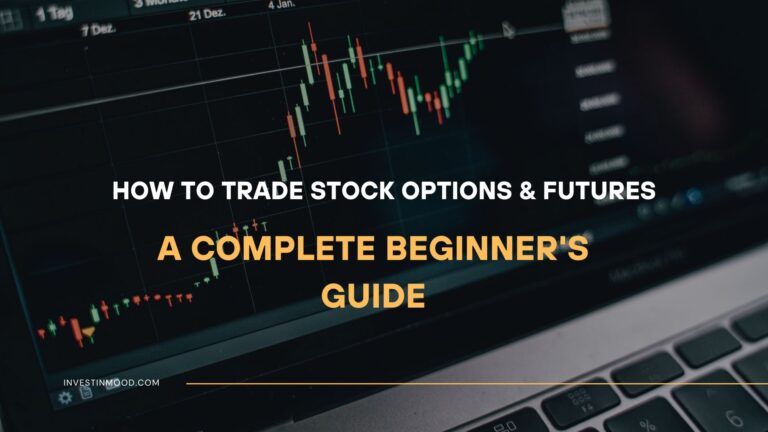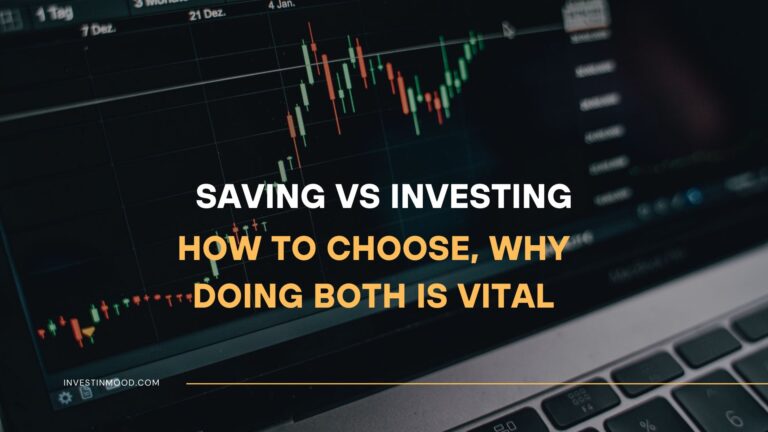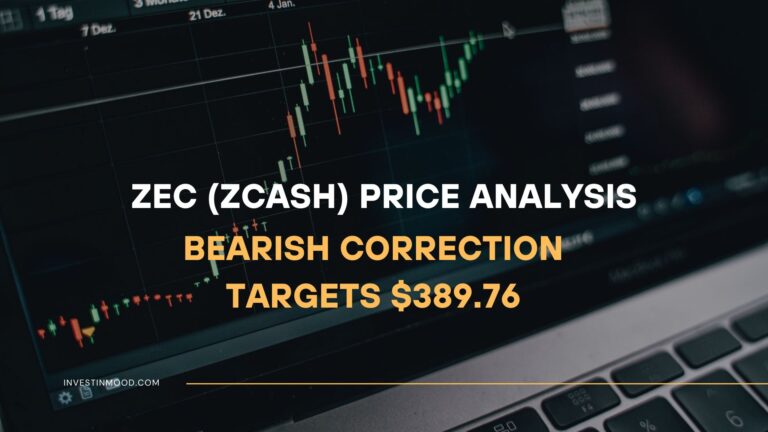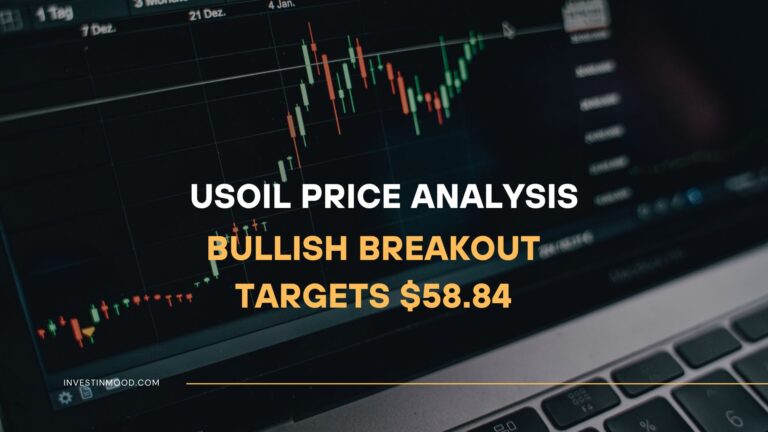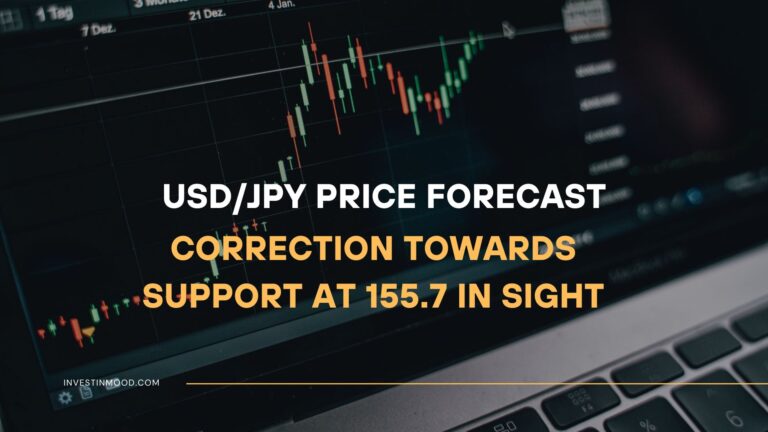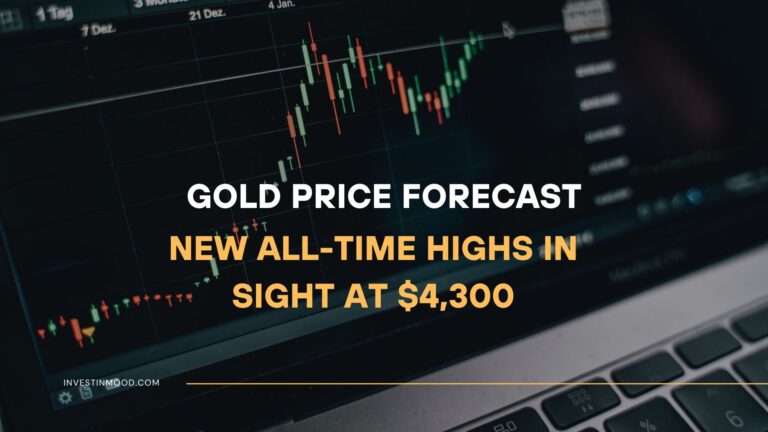
10 Best Retirement Plans of 2026 to Subscribe For Good Future
Taking control of your golden years starts with choosing the right retirement plan. This guide cuts through the complexity to review the best retirement accounts and strategies available today. We help you find the perfect fit for your goals, whether you’re a W-2 employee in the US, a self-employed entrepreneur in the UK, or a Canadian investor, to build lasting wealth and achieve a secure retirement.
What are Retirement Plans
Retirement plans are specialized financial accounts with tax advantages designed to help you save and invest for your post-working years. They act as a structured framework to systematically set aside a portion of your income, allowing it to grow through compound interest and investment returns over decades. Think of them as a protective shield for your future income, incentivizing savings by reducing your tax bill today or allowing for tax-free growth and withdrawals tomorrow. A well-structured retirement plan is the cornerstone of any sound financial future, providing peace of mind and financial independence when you need it most.
Key Takeaways
Goal-Based Retirement Plan Selection
| Your Primary Situation | Best Plan Type | Key Feature to Look For |
|---|---|---|
| Employed with a Company Match | 401(k) or 403(b) | Get the full employer match; it’s free money. |
| Self-Employed or Business Owner | SEP IRA or Solo 401(k) | High contribution limits to reduce taxable income. |
| Seeking Tax Diversification | Roth IRA | Tax-free growth and withdrawals in retirement. |
| Maximizing Tax Deferral | Traditional IRA | Tax-deductible contributions for those who qualify. |
| Catching Up (Age 50+) | 401(k) or IRA with Catch-Up | Additional contributions allowed for those 50 and older. |
For investors in the UK, consider a Self-Invested Personal Pension (SIPP) as a powerful alternative to the 401(k), offering a wide range of investment choices. In Canada, the Registered Retirement Savings Plan (RRSP) is the cornerstone of retirement savings, providing significant tax-deferred growth. Always check local contribution limits and tax rules with official sources like GOV.UK or the Canada Revenue Agency.
10 Best Retirement Plans of 2026 to Subscribe For Better Future
We’ve analyzed the landscape of retirement accounts to bring you unbiased, detailed reviews. Here are our top 10 picks for 2026, broken down by their strengths, ideal user, and key features. Understanding the different types of retirement plans is crucial to building a diversified and resilient portfolio.
1. 401(k) Plan
Overall Score: 5/5
Best For: Employees at companies that offer a match.
Pricing: Typically no account fee, but underlying investment funds have expense ratios.
A 401(k) is an employer-sponsored retirement plan that allows employees to contribute a portion of their salary on a pre-tax basis. Many employers sweeten the deal by matching a percentage of employee contributions, which is essentially free money. Contributions grow tax-deferred, meaning you don’t pay taxes on the money or its earnings until you withdraw it in retirement. It’s one of the most powerful and accessible tools for building retirement wealth.
Key Features:
- High annual contribution limits (over $20,000).
- Potential for employer matching contributions.
- Automatic payroll deductions.
- A curated selection of investment options (mutual funds, target-date funds).
- Loans and hardship withdrawals may be available.
- Employer Match This is the biggest advantage. It’s an immediate, guaranteed return on your investment.
- High Contribution Limits Allows for significant tax-advantaged savings each year.
- Automatic Saving Payroll deductions make saving effortless and consistent.
- Limited Investment Choices You are restricted to the funds selected by your employer’s plan.
- Early Withdrawal Penalties Accessing funds before age 59½ typically incurs a 10% penalty plus income taxes.
- Potential for High Fees Some plans have administrative or high-cost fund fees that can eat into returns.
Why We Picked It: We chose the 401(k) for the #1 spot because the employer match is the single most valuable feature in the retirement planning universe. For anyone with access to one, maximizing this benefit should be the absolute first step in their retirement strategy.
2. Roth IRA
Overall Score: 5/5
Best For: Young investors and those who believe their tax rate will be higher in retirement.
Pricing: Varies by provider; many brokers like Charles Schwab and Fidelity offer them with no account fees and a wide selection of low-cost funds.
A Roth IRA is an individual retirement account that you fund with after-tax dollars. While you don’t get a tax break on the money you put in, the magic happens when you withdraw: all qualified distributions, including decades of investment growth, are completely tax-free. This provides incredible tax diversification and predictability for your retirement income, making it a cornerstone for any savvy retirement saver.
Key Features:
- Tax-free growth and qualified withdrawals.
- Contributions (but not earnings) can be withdrawn at any time, for any reason, without penalty.
- No required minimum distributions (RMDs) during the owner’s lifetime.
- Wide flexibility in investment choices (stocks, bonds, ETFs, mutual funds).
- Tax-Free Withdrawals The most significant benefit, especially for long-term growth.
- Tax Diversification Provides a source of tax-free income in retirement, which is valuable for managing your tax bracket.
- Flexibility & No RMDs Access to contributions and no required minimum distributions offer more control.
- No Upfront Tax Deduction Contributions are made with after-tax income.
- Income Limits High earners are prohibited from contributing directly to a Roth IRA.
- Lower Contribution Limits The annual limit is significantly lower than that of a 401(k).
Why We Picked It: The Roth IRA earns its high ranking due to its unparalleled benefit of tax-free growth. It’s the ultimate tool for hedging against future tax increases and provides exceptional flexibility, making it an essential component of a modern retirement strategy.
3. Traditional IRA
Overall Score: 4.5/5
Best For: Individuals who want a tax break now and expect to be in a lower tax bracket in retirement.
Pricing: Often no fees at major brokers.
A Traditional IRA allows you to make pre-tax contributions, which can lower your taxable income for the year you contribute. The investments grow tax-deferred, and you pay ordinary income tax on withdrawals in retirement. It’s a classic retirement savings vehicle, perfect for those who need an immediate tax deduction.
Key Features:
- Tax-deductible contributions (subject to income limits if you have a workplace plan).
- Tax-deferred growth.
- Wide range of investment options.
- Mandatory Required Minimum Distributions (RMDs) starting at age 73.
- Immediate Tax Savings Contributions are tax-deductible, reducing your current taxable income.
- Tax-Deferred Growth Investments grow tax-free until withdrawal in retirement.
- Accessible to All Available to anyone with earned income, regardless of employer benefits.
- Taxable Withdrawals All distributions in retirement are taxed as ordinary income.
- Early Withdrawal Penalties Funds accessed before age 59½ face a 10% penalty plus taxes.
- Required Minimum Distributions You must start taking withdrawals at age 73, whether you need the money or not.
Why We Picked It: The Traditional IRA remains a top pick for its straightforward, immediate tax benefit, making it ideal for reducing your current tax burden while saving for the future.
4. SEP IRA (Simplified Employee Pension)
Overall Score: 4.5/5
Best For: Self-employed individuals and small business owners with no or few employees.
Pricing: Low setup and maintenance costs.
A SEP IRA is a retirement plan for self-employed individuals and small business owners. It’s incredibly simple to set up and maintain. Contributions are made by the employer (yourself) directly to your own (and your employees’) traditional IRA. The contribution limits are very high—much higher than a standard IRA or 401(k).
Key Features:
- Very high contribution limits (up to 25% of net earnings, with a cap).
- Easy to establish and administer with minimal paperwork.
- Tax-deductible contributions for the business.
- Contributions are flexible year-to-year.
- Extremely High Contribution Limits Allows contributions up to 25% of net earnings, much higher than other plans.
- Low Cost & Simple Easy to establish and administer with minimal paperwork and costs.
- Tax Deductions Contributions are tax-deductible as business expenses.
- No Catch-Up Contributions Does not allow additional contributions for those aged 50 and over.
- Employee Requirements Must contribute the same percentage for all eligible employees.
- No Roth Option All contributions are pre-tax; no after-tax option available.
Why We Picked It: For the self-employed, the SEP IRA is a powerhouse due to its massive contribution limits and simplicity, allowing business owners to supercharge their retirement savings while reducing their taxable income significantly.
5. Solo 401(k)
Overall Score: 4.5/5
Best For: Self-employed business owners with no employees (other than a spouse).
Pricing: Slightly more complex than a SEP IRA but still low-cost.
Also known as a One-Participant 401(k), this plan combines the features of a traditional 401(k) with the high contribution limits of a SEP IRA. You can contribute as both the employee and the employer, leading to the highest possible total contribution of any plan for the self-employed.
Key Features:
- Allows for both employee elective deferrals and employer profit-sharing.
- Highest possible contribution limit for the self-employed.
- Can include a Roth 401(k) option.
- Allows for plan loans.
- Maximum Contribution Potential Highest possible contribution limit for self-employed individuals.
- Roth Option Available Allows for after-tax contributions and tax-free growth.
- Loan Provisions Permits borrowing against the account balance, unlike most other self-employed plans.
- More Complex Setup Requires more paperwork and administration than a SEP IRA.
- Employee Restrictions Generally only for business owners with no employees (other than spouse).
- Higher Administrative Burden May require Form 5500-EZ filing once assets exceed $250,000.
Why We Picked It: The Solo 401(k) is the ultimate retirement plan for a solo entrepreneur, offering the highest contribution ceiling and features like a Roth option that a SEP IRA lacks.
6. 403(b) Plan
Overall Score: 4/5
Best For: Employees of public schools, non-profit organizations, and certain ministers.
Pricing: Similar to 401(k)s, but historically had higher fees; this has improved.
A 403(b) is functionally very similar to a 401(k) but is offered by tax-exempt organizations. Employees make pre-tax contributions through salary reduction, and many employers offer a match. The investment options were traditionally annuities, but modern 403(b)s now offer mutual funds as well.
Key Features:
- Pre-tax contributions and tax-deferred growth.
- Often includes an employer match.
- Special “15 Years of Service” catch-up provision for long-term employees.
- Employer Match Many non-profit employers offer matching contributions.
- Special Catch-Up Rules Unique “15 Years of Service” catch-up provision for long-term employees.
- Tax Deferral Pre-tax contributions and tax-deferred growth reduce current taxable income.
- Limited Investment Options Often restricted to annuities or a limited selection of mutual funds.
- Potentially High Fees Annuity-based plans may have higher fees and surrender charges.
- Less Common Fewer resources and less public awareness compared to 401(k) plans.
Why We Picked It: The 403(b) is essential for teachers and non-profit employees, providing them with the same powerful savings vehicle as a 401(k), complete with potential matching funds.
7. Health Savings Account (HSA)
Overall Score: 5/5
Best For: Anyone with a qualifying High-Deductible Health Plan (HDHP).
Pricing: Often has monthly fees, but many can be waived with a minimum balance.
While technically not a retirement plan, an HSA is the most tax-advantaged account available. Contributions are tax-deductible (or pre-tax), growth is tax-free, and withdrawals for qualified medical expenses are tax-free. After age 65, you can withdraw funds for any purpose without penalty (you’ll just pay income tax, making it like a Traditional IRA).
Key Features:
- Triple tax advantage: tax-deductible, tax-free growth, tax-free withdrawals for medical costs.
- No “use-it-or-lose-it” rule; funds roll over year to year.
- Can be invested in stocks and funds once a cash threshold is met.
- Becomes a flexible retirement account after age 65.
- Triple Tax Advantage Tax-deductible contributions, tax-free growth, and tax-free withdrawals for medical expenses.
- No Use-It-Or-Lose-It Funds roll over year to year and are yours forever.
- Flexible Retirement Account After age 65, can be used for any purpose without penalty (just pay income tax).
- HDHP Requirement Must be enrolled in a High-Deductible Health Plan to contribute.
- Penalty for Non-Medical Use Withdrawals for non-medical expenses before age 65 incur a 20% penalty.
- Contribution Limits Lower annual limits compared to retirement-specific accounts.
Why We Picked It: We rank the HSA so highly because its triple tax advantage is unique. When used as a long-term investment account, it effectively functions as a super-powered retirement plan for healthcare and general expenses in retirement.
8. Defined Benefit Plan
Overall Score: 3.5/5
Best For: High-income business owners (often over 40) looking to save massive amounts for retirement.
Pricing: High setup and annual actuarial costs.
This is a traditional pension plan. It promises to pay a specified monthly benefit at retirement, based on salary history and years of service. For small business owners, a Cash Balance Plan (a type of defined benefit plan) can allow for enormous, tax-deductible contributions far exceeding any other plan.
Key Features:
- Can allow for contributions of $100,000+ per year.
- Tax-deductible contributions for the business.
- Guaranteed retirement income.
- Massive Contribution Limits Can allow for contributions of $100,000+ per year for high earners.
- Predictable Benefits Provides guaranteed retirement income based on a formula.
- Significant Tax Deduction Large contributions provide substantial current-year tax savings.
- Extremely Complex & Costly High setup costs and requires annual actuarial services.
- Rigid Funding Requirements Must fund annually regardless of business profitability.
- Not Suitable for Most Only practical for established, high-income business owners.
Why We Picked It: For the right person—a high-earning, established business owner—a Defined Benefit Plan is the ultimate tool for rapid, tax-advantaged wealth accumulation, making it a niche but powerful pick.
9. 457(b) Plan
Overall Score: 4/5
Best For: State and local government employees, as well as highly-compensated employees of certain tax-exempt organizations.
Pricing: Similar fee structure to 401(k) and 403(b) plans.
A 457(b) is a non-qualified, tax-advantaged deferred-compensation plan for government and some non-profit workers. It’s similar to a 401(k) but with one key difference: there is no 10% early withdrawal penalty if you separate from service from your employer (you still pay income tax).
Key Features:
- Pre-tax contributions.
- No 10% early withdrawal penalty upon separation from service.
- Often offers both a governmental and a non-governmental version.
- Separate contribution limit from 401(k)/403(b), meaning you can potentially contribute double.
- No Early Withdrawal Penalty Unique exemption from 10% penalty upon separation from service.
- Double Contribution Potential Can contribute to both 457(b) and 401(k)/403(b) simultaneously.
- Tax-Deferred Growth Pre-tax contributions and tax-deferred investment growth.
- Credit Risk for Non-Governmental Assets may be subject to employer’s creditors in non-governmental plans.
- Less Common Fewer resources and public understanding compared to 401(k) plans.
- Distribution Rules Complex distribution requirements that vary by plan type.
Why We Picked It: The 457(b) plan is a top pick for its unique exemption from the early withdrawal penalty, offering unparalleled flexibility for government workers who may retire early.
10. Taxable Brokerage Account
Overall Score: 4/5
Best For: Anyone who has maxed out their tax-advantaged space and needs flexible, accessible funds.
Pricing: Varies; many brokers offer commission-free trading.
This is a standard investment account with no special tax treatment. You contribute after-tax money, and you pay taxes on dividends and capital gains as they occur. While it lacks tax advantages, it offers complete flexibility: no contribution limits, no withdrawal rules, and no penalties for accessing your money at any time.
Key Features:
- No contribution limits.
- No restrictions on withdrawals.
- Access to a full universe of investments (stocks, bonds, ETFs, options).
- Taxed on dividends and capital gains.
- Complete Flexibility No contribution limits, withdrawal rules, or age restrictions.
- Immediate Liquidity Funds can be accessed at any time for any purpose without penalties.
- No Income Limits Accessible to all investors regardless of income level.
- No Tax Advantages No deductions for contributions and taxable growth/dividends.
- Tax Drag Annual taxes on dividends and capital gains can slow compounding.
- Not Retirement-Specific Lacks the structured benefits of dedicated retirement accounts.
Why We Picked It: A taxable brokerage account is a crucial part of a complete financial plan. It provides the “bridge” for early retirement and the flexibility that tax-advantaged accounts lack, making it an essential tool for a better future.
A Real-World Example: The Power of Starting Early
Consider Sarah, a 25-year-old graphic designer who starts her career with a $50,000 salary. Her employer offers a 401(k) with a 50% match on the first 6% of her salary. Sarah decides to contribute 6% ($3,000) annually to get the full $1,500 employer match. Assuming a conservative 7% annual return, by the time she retires at 65, her 401(k) balance would be over $1 million, with nearly a third of that growth attributable to the employer match and compounding alone.
Your 5-Step Retirement Planning Action Plan
Feeling overwhelmed? Follow this simple, sequential checklist to build your retirement strategy from the ground up.
Step 1: Secure Your Employer’s Free Money.
- Action: If you have a 401(k), 403(b), or similar plan with an employer match, log in to your account immediately.
- Goal: Increase your contribution percentage to at least the level required to get the FULL employer match. This is your #1 priority.
Step 2: Open and Fund an IRA.
- Action: Open a Roth or Traditional IRA at a low-cost broker like Vanguard, Fidelity, or Charles Schwab.
- Goal: Contribute the maximum amount allowed for the year. If you can’t max it out, start with a consistent monthly amount you can afford.
Step 3: Max Out Your Workplace Plan.
- Action: Once you’re getting the full match and funding an IRA, circle back to your 401(k)/403(b).
- Goal: Gradually increase your contributions toward the annual maximum. Even a 1% increase per year can make a huge difference.
Step 4: Explore Advanced Options.
- Action: If you’re self-employed, look into a SEP IRA or Solo 401(k). If you have an HDHP, open and fund an HSA.
- Goal: Utilize these high-contribution plans to accelerate your savings and gain additional tax advantages.
Step 5: Implement a “Save More Tomorrow” Strategy.
- Action: Commit to automatically increasing your retirement contributions by 1-2% every time you get a raise.
- Goal: You’ll never miss the money, and your savings rate will grow painlessly alongside your income.
5 Common Retirement Planning Mistakes
Knowing what not to do is just as important as knowing what to do. Steer clear of these costly errors.
1. Cashing Out Your 401(k) When Changing Jobs.
- The Pitfall: Taking a lump-sum distribution triggers income tax and a 10% early withdrawal penalty, devastating your long-term growth.
- The Solution: Always do a direct rollover into your new employer’s plan or an IRA.
2. Taking Loans From Your Retirement Plan.
- The Pitfall: You’re not only robbing your future self of compound growth, but you also risk having to repay the entire loan immediately if you lose or leave your job. If you can’t repay it, it becomes a taxable distribution with penalties.
- The Solution: Treat your retirement account as untouchable. Build a separate emergency fund to cover 3-6 months of expenses.
3. Being Too Conservative Too Early.
- The Pitfall: Holding all your retirement savings in cash or low-yield bonds in your 20s, 30s, and 40s guarantees that your money will not grow enough to outpace inflation, leaving you with a significant shortfall.
- The Solution: Embrace a diversified but growth-oriented portfolio (heavier in stocks) when you are young, as you have time to recover from market downturns.
4. Ignoring Fees.
- The Pitfall: High investment expense ratios and plan administrative fees can silently eat away 25-30% of your potential earnings over a lifetime. A 1% fee might not sound like much, but it has a massive long-term impact.
- The Solution: Choose low-cost index funds and ETFs whenever possible. Review your plan’s fee disclosure statement and ask your HR department about lower-cost options.
5. Not Naming a Beneficiary.
- The Pitfall: If you pass away without naming a beneficiary on your retirement accounts, the assets may have to go through probate, causing delays, legal costs, and distributions that may not align with your wishes.
- The Solution: Log in to every retirement account you own and ensure your primary and contingent beneficiaries are up to date, especially after major life events like marriage or the birth of a child.
Conclusion
Ultimately, the right retirement plan acts as the foundation for your financial independence. It provides the structure and tax incentives needed to transition from simply earning money to systematically building wealth. While the choice depends on your employment status, income, and long-term goals, the most critical step is to start now. The power of compounding means that even small, regular contributions made early can dwarf larger sums saved later in life. Start by claiming your employer match, then fund an IRA, and continue to scale your savings as your income grows. The clarity and security gained from taking control of your retirement today are invaluable.
Ready to build your retirement command center? The best way to start is to pick one plan from our list above and open an account. If you have a 401(k), log in today and ensure you’re getting the full match. Once you’ve started saving, the next step is to ensure your investments are aligned with your strategy. Check out our reviews of the Best Online Brokers and Robo-Advisors to get started on optimizing your portfolio.
How Retirement Plans Relate to Other Concepts
| Feature | Retirement Plans | Robo-Advisors | Taxable Brokerage |
|---|---|---|---|
| Primary Function | Tax-Advantaged Saving & Investing | Automated Portfolio Management | General, Flexible Investing |
| Tax Advantages | Yes (Tax-deferral or tax-free growth) | Depends on the account type used (IRA, Taxable) | No (Taxed on dividends & gains) |
| Cost Structure | Account/Admin fees + Fund Fees | Annual Management Fee (AUM) | Trading Commissions + Fund Fees |
| Contribution Limits | Yes | Yes, if using an IRA/401(k) wrapper | No |
| Best For | Long-term retirement savings | Hands-off investors wanting automation | Goals before 59.5, supplemental savings |
Related Terms
- Asset Allocation: The strategy of dividing your investment portfolio among different asset categories, such as stocks, bonds, and cash. This is a key decision you make within your retirement accounts.
- Target-Date Fund: A mutual fund that automatically adjusts its asset allocation to become more conservative as the target date (usually your retirement year) approaches. A popular “set-it-and-forget-it” option in 401(k) plans.
- Required Minimum Distribution (RMD): The minimum amount you must withdraw annually from most retirement accounts (excluding Roth IRAs) starting at age 73 (as of 2023). Failure to take RMDs results in a heavy tax penalty.
- Vesting Schedule: The schedule that determines when you own the employer-contributed funds in your 401(k) or 403(b). You are always 100% vested in your own contributions.
Frequently Asked Questions About Retirement Plans
Recommended Resources
- For up-to-date contribution limits and rules, the IRS Retirement Topics page is the definitive source.
- Investopedia’s Retirement Planning Guide offers a deep library of educational content.
- The Motley Fool’s Retirement Savings Center provides strategy and stock ideas for retirement investors.
- For UK readers, the Money Advice Service Pensions Guide is an excellent official resource.
- To understand the security of account linking, you can read about Plaid’s security practices.

